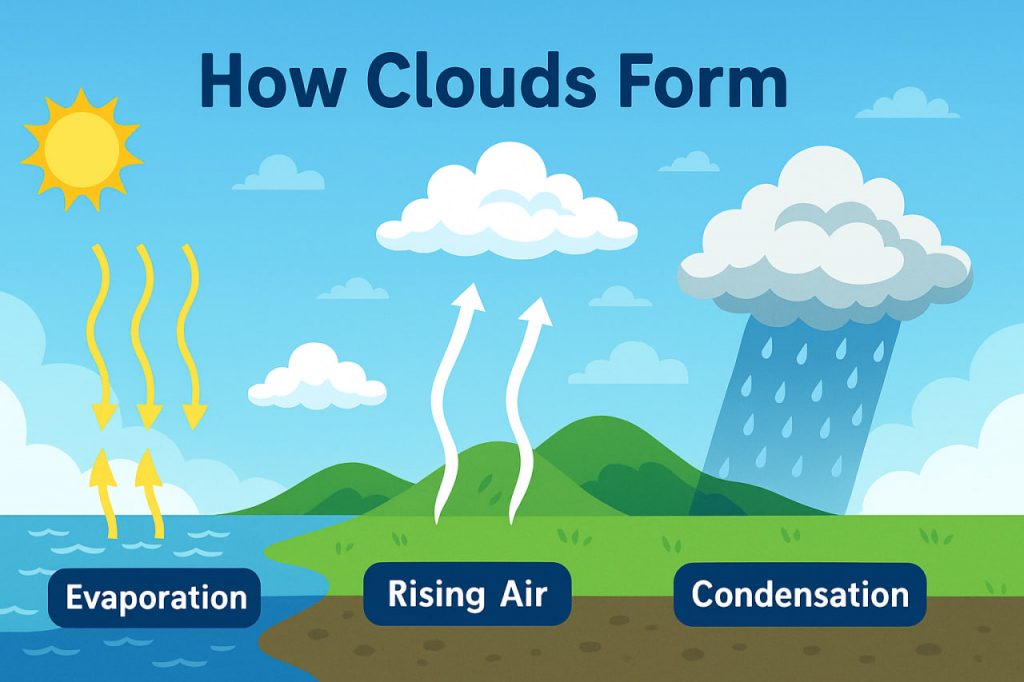Clouds are one of the most familiar and fascinating parts of our atmosphere. From soft white puffs to towering storm formations, clouds play a vital role in Earth’s weather and climate. But how exactly do they form?
What Are Clouds?
Clouds are made up of tiny water droplets or ice crystals suspended in the air. Though they may look soft and light, an average cloud can weigh hundreds of tons. Their formation is a result of complex interactions between air, water, and temperature.
The Cloud Formation Process
- Evaporation
The process begins when the Sun heats up water from oceans, lakes, rivers, and moist soil. Water evaporates, turning into invisible water vapor that rises into the atmosphere. - Rising Air and Cooling
As warm, moist air rises, it expands and cools. The higher it goes, the cooler the temperature becomes. - Condensation
When the air cools to its dew point, the water vapor condenses around tiny particles in the air—like dust, pollen, or sea salt. These tiny droplets group together to form clouds. - Cloud Growth
As more vapor condenses, clouds grow. If enough water collects, the droplets combine and fall as precipitation—rain, snow, or hail.
Factors That Affect Cloud Formation
- Humidity: The more water vapor in the air, the greater the chance of cloud formation
- Air pressure: Low pressure promotes rising air and cloud development
- Temperature: Colder air helps water vapor condense more easily
- Topography: Mountains can force air upward, creating clouds and rain
Types of Clouds
Clouds are classified by their shape and altitude:
- Cumulus: Fluffy, white clouds—often seen on sunny days
- Stratus: Flat, gray layers that can cover the whole sky
- Cirrus: Thin, wispy clouds high in the sky—made of ice crystals
- Cumulonimbus: Tall, dark thunderstorm clouds capable of heavy rain and lightning
Why Clouds Matter
- Regulate temperature by reflecting sunlight or trapping heat
- Distribute precipitation needed for life
- Indicate weather changes—cloud types help meteorologists forecast storms or fair weather
- Influence climate by affecting how much solar energy reaches Earth
Conclusion
Clouds may seem simple, but their formation involves a complex blend of physics, weather, and chemistry. They are essential for maintaining Earth’s water cycle and for predicting weather patterns. Next time you look up at the sky, remember: you’re watching nature’s invisible forces at work.
Glossary
- Evaporation: Water changing from liquid to vapor
- Condensation: Water vapor turning into liquid droplets
- Dew point: The temperature at which air becomes saturated with moisture
- Precipitation: Water that falls from the atmosphere
- Humidity: The amount of water vapor in the air


